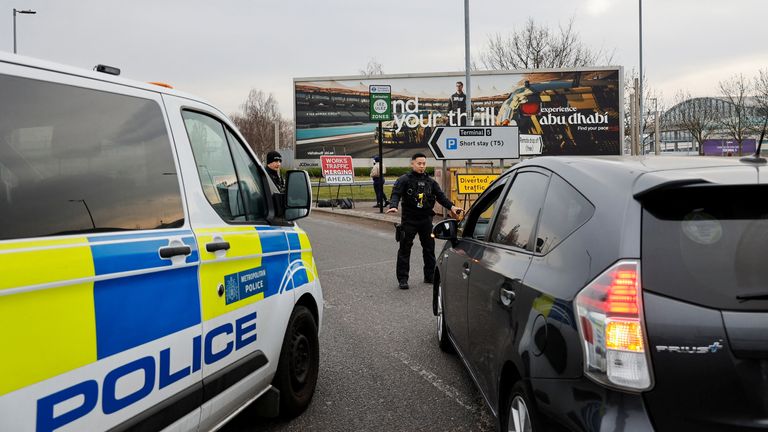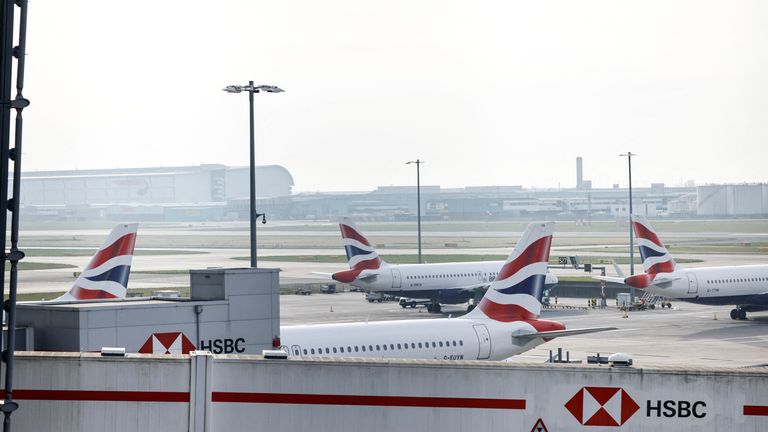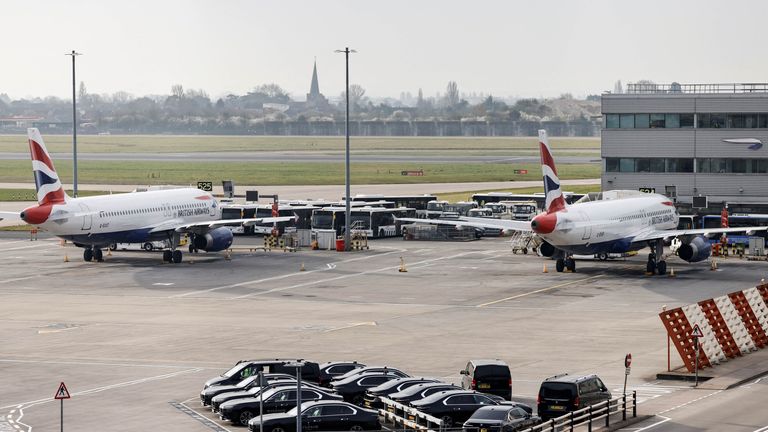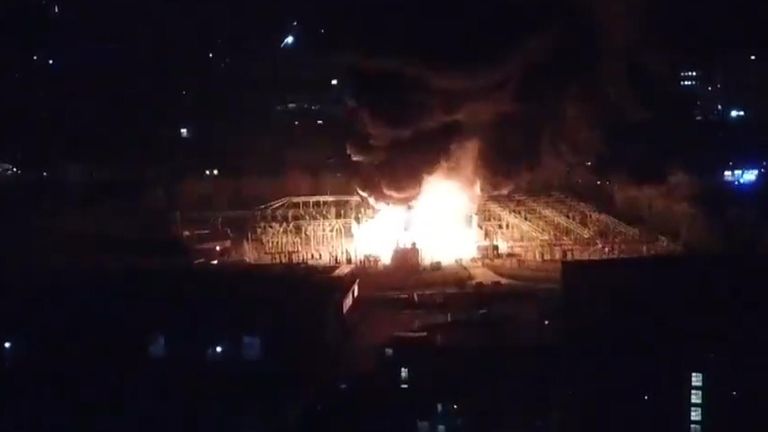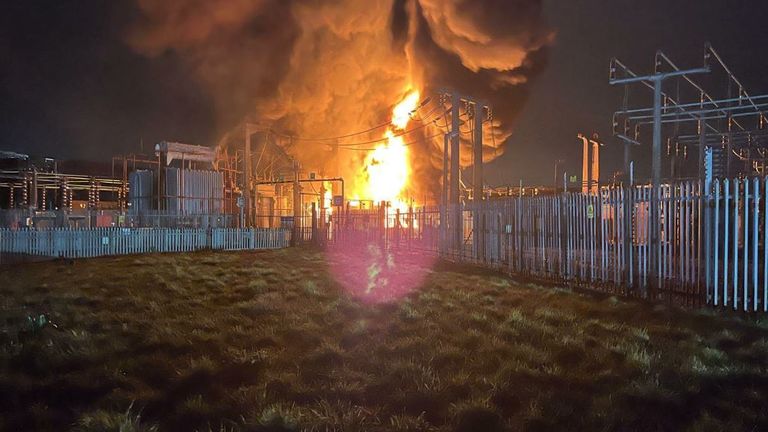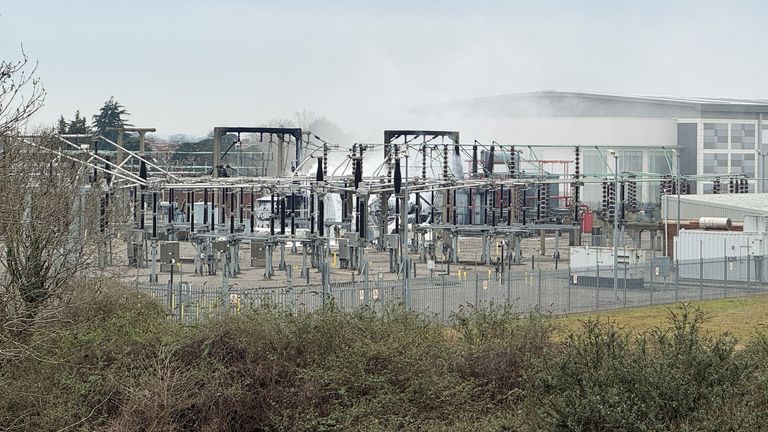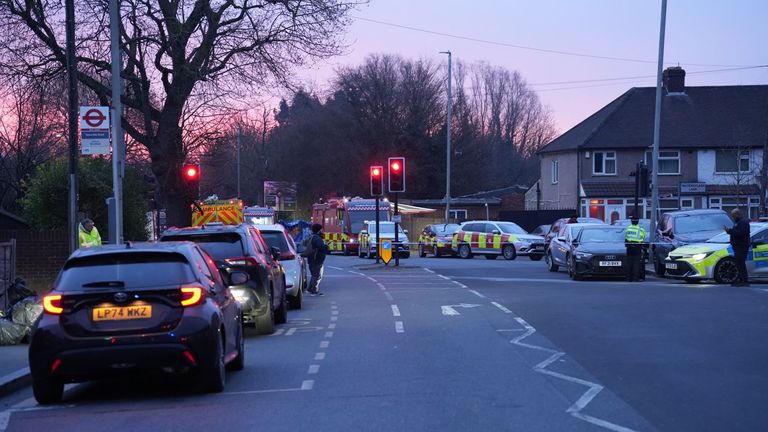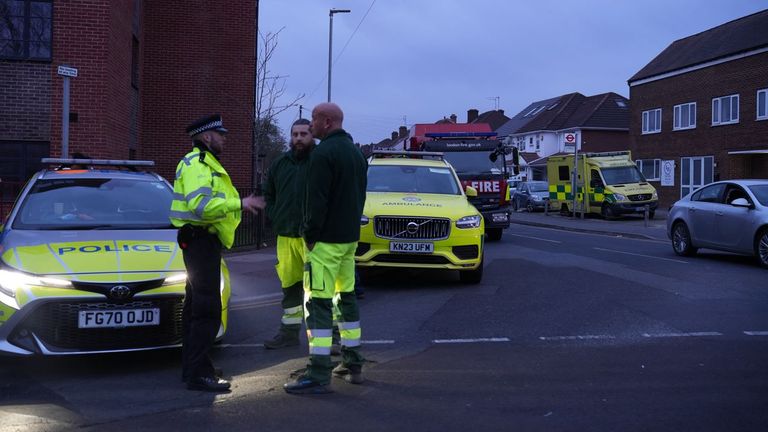
Heathrow Airport closed after ‘significant power outage’ due to nearby fire
Heathrow Airport is to remain shut until midnight after a large fire at a nearby electricity substation, disrupting travel for thousands of passengers.
Tracking site Flightradar24 estimates 1,357 flights would be affected (679 into and 678 out of Heathrow) today, including around 120 which were already in the air this morning before the shutdown.
Energy Secretary Ed Miliband told Sky News “it was too early to know” what caused the “catastrophic fire”.
Follow live updates on Heathrow closure
Passengers have been warned to stay away from the airport and all trains to Heathrow have been suspended.
“To maintain the safety of our passengers and colleagues, we have no choice but to close Heathrow until 23h59 on 21 March 2025,” Heathrow said in a statement.
“We expect significant disruption over the coming days and passengers should not travel to the airport under any circumstances until the airport reopens.”
Planes usually begin landing and taking off at around 5am after the regular overnight quiet period.
Around 120 flights were bound for Heathrow when the airport announced it would be closing for the day. Some will have turned back to the airport they departed from. But others were already crossing the Atlantic and have been diverted to airports in Europe.
Data from Flightradar24 shows Amsterdam has taken the most diversions at seven, while Gatwick, Frankfurt and Shannon have all taken six flights each.
Heathrow is one of the world’s busiest airports and had a record 83.9 million passengers last year, with a plane landing or taking off around every 45 seconds. Flightradar24 estimates that means there are about 220,000 passengers using the hub every day.
Its total closure is set to have knock-on effects on airline operations around the world for several days to come.
British Airways, the biggest carrier at Heathrow, reiterated that customers should not go to the airport until further notice.
A statement said: “This will clearly have a significant impact on our operation and our customers and we’re working as quickly as possible to update them on their travel options for the next 24 hours and beyond.”
Gatwick Airport said in a statement that it is “supporting by accepting diverted flights as required” and that it is operating “as normal today”.
16,000 homes without power
The fire that caused the power outage is at a substation in Hayes, about 1.5 miles to the north of the airport, and an estimated 16,000 homes nearby are also without electricity.
London Fire Brigade (LFB) said the blaze was now under control and, while there have been no casualties, crews evacuated 29 people from neighbouring properties.
Earlier pictures from the scene – on Nestles Avenue – showed large flames and plumes of thick black smoke.
LFB said 10 engines and around 70 firefighters had been working to extinguish the blaze – with the first 999 call received at 11.23pm on Thursday.
It said a transformer within the North Hyde substation had caught alight but the cause is so far unknown.
A National Grid spokesperson said they “working at speed to restore power supplies as quickly as possible” after the fire damaged equipment.
Backup generator also failed
Energy Secretary Ed Miliband told Sky News there was a backup generator but it was also affected by what he called a “catastrophic fire”.
He described the situation as “unusual and unprecedented” adding it was “too early to know” what caused the substation blaze.
Fire was ‘significant incident’
LFB Assistant Commissioner Pat Goulbourne said it was a “significant incident” but crews “successfully contained the fire and prevented further spread”.
“While power has been restored to some properties, we continue to work closely with our partners to minimise disruption,” he added. Local residents have been told to keep their windows and doors closed.
Scottish and Southern Electricity Networks said shortly after midnight that a “widespread power cut” was affecting Hayes, Hounslow and surrounding areas.
A graphic on the company’s website suggested around 16,000 homes were affected.



